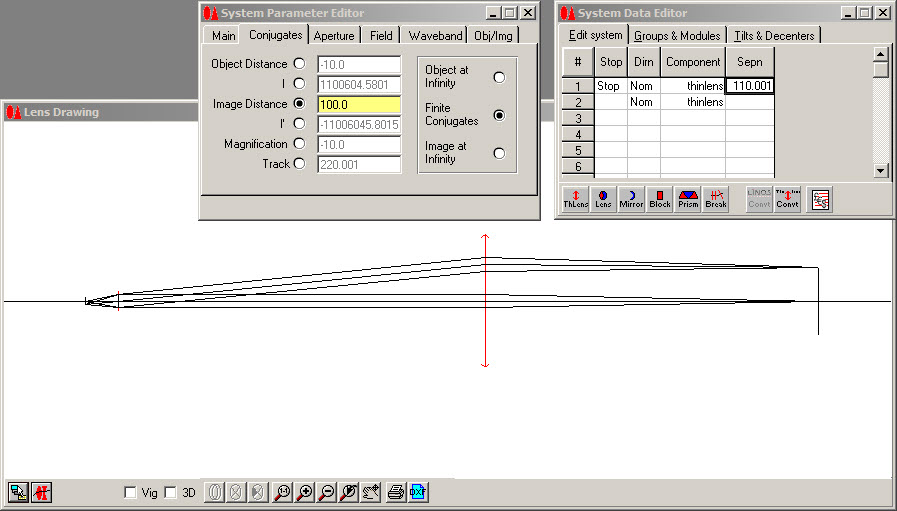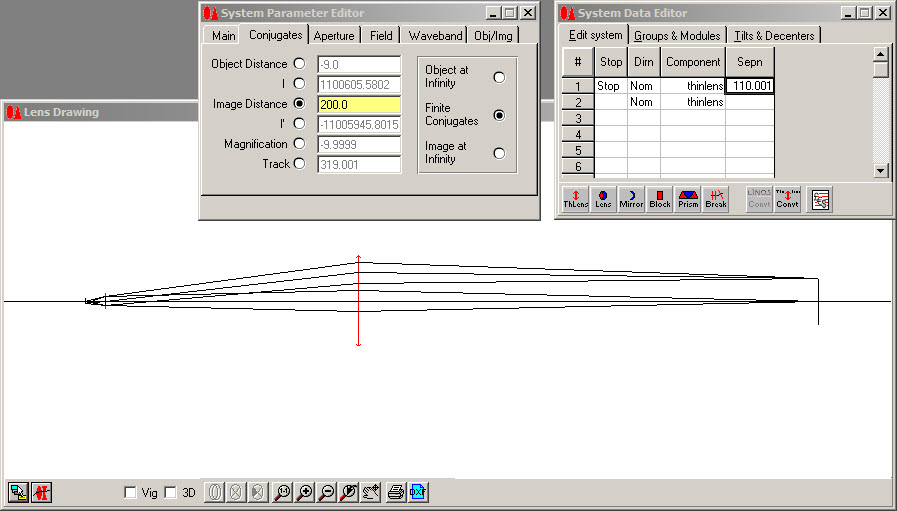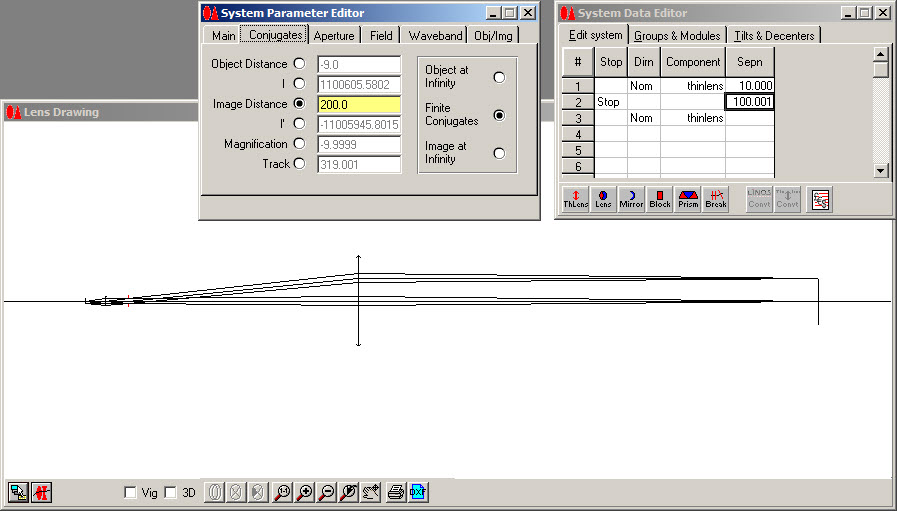In the other thread, michael_r wrote that:
I don't know if the formulas apply in that case either. It's an unusual situation.but if e gets larger than f1+f2 then total f becomes negative - i'm not sure that my calculations apply to that case (to my knowledge imaging with f1+f2 < e is usually described as a succession of two imaging processes with a real intermediate image).
But just because total f becomes negative doesn't mean that the lens system has to form an intermediate image. Here is an example using f1=10, f2=100, and e=150, that gives 6X with a single stage of magnification (no intermediate real image).

In working with these unusual systems, I have found that the concept of "total f" needs to approached with some caution.
When e = f1 + f2, the total f becomes infinite.
My first thought is that such a combination would make a good telescope or a beam expander/reducer, but surely it could not form a real image.
But that's not correct, and here's one illustration, giving 10X magnification at an image distance of 100 mm from the rear lens:

Oddly enough, if the subject then moves closer to the front lens so as to push the image plane back to 200 mm, the magnification still ends up being 10X despite doubling the rear extension!

This latter observation makes complete sense if you think of arriving at these odd configurations by starting with the traditional case of putting a 100 mm tube lens shortly behind a 10 mm infinity objective, and then gradually increasing first the center extension, and then the rear extension.
Starting with the traditional case, increasing the center extension has no effect on magnification because that region is focused at infinity. You may get vignetting, but none of the ray angles will change. That takes us from the traditional case to the long center section but still 100 mm of "rear extension" from the second lens to the image.
Then to make the second step, increasing the rear extension, we note that the magnification should change as
But because total_f is infinity, added_magnification will be zero and the system will remain fixed at 10X.added_magnification = added_extension / total_f
The system becomes even more confusing if you place the limiting aperture between the two lenses, at their common "focus" point 10 mm behind the 10 mm lens and 100 mm in front of the 100 mm lens. In that case the system also becomes telecentric on both sides, as well as fixed magnification!
Here is the ray diagram for 200 mm rear extension in that case.

I'll make another plug here for WinLens3D, a ray-tracing package whose "Basic" version is both free and pretty simple to use. While the math formulations are great for calculation, the ray traces are what give me insight and keep me from misinterpreting or misapplying the formulas.
WinLens3D does have a few limitations, one of which is that it can't handle exactly the system we've been talking about! When I specify e = f1+f2 exactly, with finite conjugates, WinLens3D complains that "Err: 6 Overflow // SysDatEventDirect // Suggest you reverse last action if possible". Then the trick becomes to perturb the optics just far enough to avoid overflow in the arithmetic, without having any significant effect on the ray traces. Hence, 110.001 mm of separation, versus the exact 110.
Great fun, eh?
--Rik




